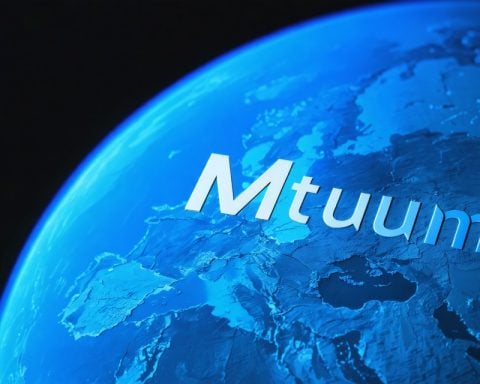Turkey’s Leap into Space Innovation
Turkey’s Minister of Transport and Infrastructure, Abdulkadir Uraloglu, recently celebrated a monumental achievement: the country’s first homegrown communication satellite, Türksat 6A, has successfully reached its permanent geosynchronous orbit at 42 degrees east.
The ambitious satellite embarked on its journey on July 9 from SpaceX’s Cape Canaveral, touching down temporarily at 50 degrees east just days later. Following a series of thorough payload tests, the satellite finalized its orbit at an altitude of 35,786 kilometers above Earth on December 27, after a critical adjustment was made in the early hours.
Uraloglu emphasized that Türksat 6A is a cornerstone of Turkey’s aspirations in the space sector, marking it as the largest research and development initiative in the nation’s history. He articulated that this satellite represents much more than just communication capabilities; it is a blueprint for Turkey’s future in space exploration and its growing influence globally.
The project, which has been two decades in the making, reflects significant national progress, with substantial localization achieved in its production. The journey began with the establishment of Türksat and was propelled by the invaluable experiences gained through previous projects, culminating in the realization of the Türksat 6A satellite. Turkey is poised to enhance its presence in the global space arena with this pioneering venture.
Turkey’s Türksat 6A Satellite: A Game Changer for Space Technology
Introduction
Turkey’s ambitious space program has taken a significant leap with the successful deployment of its first indigenous communication satellite, Türksat 6A. This landmark achievement is not only a monumental milestone for Turkey but also positions the nation as a burgeoning player in the global aerospace sector. With aspirations to further its capabilities, Turkey’s strategic focus on space innovation is expected to yield substantial benefits for its technology landscape and economy.
Features of Türksat 6A
Türksat 6A boasts a range of impressive features that highlight Turkey’s engineering prowess:
– High-Throughput Technology: This satellite is designed to provide high-capacity communication services and enhance broadband connectivity across Turkey and neighboring regions.
– Geostationary Orbit: Positioned at 42 degrees East, Türksat 6A maintains a stable position relative to Earth, facilitating uninterrupted service delivery.
– Advanced Payload: The satellite is equipped with state-of-the-art transponders and antenna systems that significantly improve coverage and signal quality.
Use Cases
Türksat 6A serves numerous applications, such as:
– Telecommunications: Enhancing mobile and internet services, especially in rural areas.
– Broadcasting: Supporting the transmission of television broadcasts and multimedia content.
– Disaster Management: Providing reliable communication links for emergency response teams during natural disasters.
Pros and Cons
Pros:
– National Pride: Represents a significant achievement in domestic technological capabilities.
– Economic Growth: Paves the way for job creation in the aerospace sector and stimulates related industries.
– Enhanced Security: Offers Turkey greater independence in secure communication channels.
Cons:
– Initial Costs: Developing advanced space technology can be costly, with questions around long-term ROI.
– Technological Challenges: The complexities involved in satellite technology and maintenance present ongoing challenges.
Pricing and Market Analysis
While specific pricing details on the Türksat 6A project have not been disclosed, developing and launching such advanced satellites typically involves multi-million dollar investments. Turkey’s commitment to investing in this sector reflects a growing trend among emerging economies that are allocating resources to develop their own space technologies, potentially reshaping global market dynamics.
Innovations and Future Predictions
Turkey’s foray into satellite technology is anticipated to catalyze innovations in various sectors, including telecommunications, broadcasting, and space research. With Türksat 6A acting as a blueprint, officials are keen on the next steps, which may include:
– Expansion of Satellite Constellations: Plans to develop additional satellites that complement Türksat 6A.
– International Collaborations: Seeking partnerships with established space agencies and companies to enhance technological capabilities.
Security Aspects
The launch of Türksat 6A also raises important discussions regarding national security. By establishing an autonomous communication platform, Turkey reduces reliance on foreign satellites, thereby protecting sensitive information and ensuring sovereignty in communications.
Sustainability Efforts
In line with global trends, Turkey aims to incorporate sustainability into its space initiatives, focusing on minimizing debris and ensuring the longevity of its satellites. This is crucial in the expanding field of space commerce, where responsible practices are increasingly emphasized.
Conclusion
The successful launch of Türksat 6A marks a pivotal moment in Turkey’s quest for technological advancement and autonomy in space. As the nation builds on this momentum, it may well emerge as a key player in the global space industry, inspiring future generations of innovators and engineers.
For more information on Turkey’s space initiatives and technological advancements, visit Turkey’s Official Portal.

















